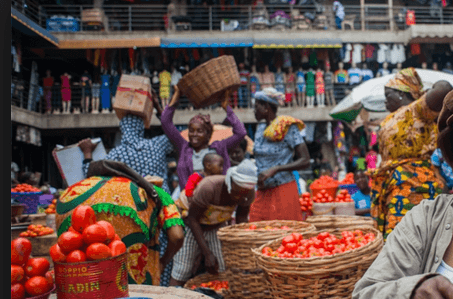Ghana’s GDP grew by 3.7% in 2016
 Ghana’s gross domestic product (GDP) grew by 3.7 per cent in 2016, a decline from the 3.8 per cent rate in 2015, thus continuing the downward trend since 2011.
Ghana’s gross domestic product (GDP) grew by 3.7 per cent in 2016, a decline from the 3.8 per cent rate in 2015, thus continuing the downward trend since 2011.
According to the Institute of Statistical, Social and Economic Research (ISSER), University of Ghana, the State of the Ghanaian Economy Report (SGER) 2016, the realised growth was below the revised target of 4.1 per cent.
The report, which was launched on Wednesday, in Accra, by Dr Anthony Yaw Baah, the Secretary General of the Trades Union Congress, indicated that, since 2014, non-oil GDP growth had outpaced overall GDP growth, with the gap widening in 2016.
It said the ranking of sectoral growth in 2016 was similar to that in 2015 and 2014, with services leading the way with 5.9 per cent, followed by agriculture with 3.6 per cent and then Industry with negative 1.2 per cent.
According to the report, the real per capita GDP growth fell from 1.3 per cent in 2015 to 1.0 per cent in 2016.
It said Ghana recorded an end-of-year inflation of 15.4 per cent compared to the target rate of 10.1 per cent.
The report said the largest and the fastest growing sector of the economy in 2016 was the services sector.
It said in 2016, real services sector growth fell short of the target of 6 per cent, a 0.3 percentage point difference; adding that, the services sector formed about 57 per cent of GDP in 2016.
It said similar to 2015, seven out of 10 sub-sectors in the services sector exceeded their growth targets in 2016.
The report said information and communications recorded the highest growth rate of 21.7 per cent but the sector’s contribution to the services sector GDP remains consistently low, accounting for 5.8 per cent in 2016.
On the industrial sector, report said there was a weak performance of the industrial sector in 2016, largely due to disruption in oil production and lower growth of water and sewage subsector.
It said however that, the industrial sector remained the second largest economic sector after the services sector, accounting for 24.3 per cent of GDP in 2016.
It said the performance of the individual industrial subsectors was generally positive even though the overall growth of the sector was negative.
It said there was a substantial growth in the electricity generation subsector of 11.1 per cent, which led to the end of the electricity load shedding programme.
It noted that the construction subsector accounted for 43.2 per cent of the output of the industrial sector, accounting for 13.7 per cent of nominal GDP.
With regards to the agricultural sector, the report said, it was still in recovery from the low growth rate recorded since 2011.
It said after two successive years of growth deceleration, the sector expanded by 3.6 per cent in 2016.
It said positive trend was observed for all the five subsectors, but the greatest recovery was in the cocoa subsector.
It attributed the improvement in the cocoa subsector to more favourable weather and gains from past rehabilitation programmes.
The report said the overall contribution of the agriculture sector to national output was 18.9 per cent in 2016.
It said the total cultivated area for food crops decreased by approximately 3.9 per cent aggregate, mean yields increased by 10.4 per cent, pointing crudely towards some kind of intensification.
Professor Felix Ankomah Asante, the Director, ISSER said the 26th edition of the SGER indicates that cassava was effective at reducing poverty and degenerating growth; while groundnuts diversify diets and reduces poverty.
He therefore, appealed to government to promote the growing of specialised crops in the various ecological zones to address particular needs of the people.
Dr Charles G. Ackah, Senior Research Fellow/Head of Economics Division, ISSER, who presented an overview of the SGER, said Sub-Saharan Africa’s GDP growth declined substantially from 3.4 per cent in 2015 to 1.4 per cent in 2016.
He attributed the decline in growth in Sub-Saharan Africa to factors such as the continuous decline in commodity prices, with oil prices being lower on average in 2016 than 2015.
Dr Baah commended ISSER for maintaining consistency and quality in the publication of the SGER over the past 26 years; which according to him, had been of great benefits to policy makers, academics and labour unions.
He further urged ISSER to include the conditions in the nation’s prisons in their next report.
Source: GNA
